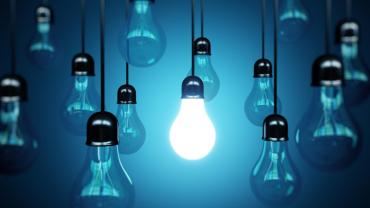
Incandescent lighting has served to illuminate the spaces of mankind since Thomas Edison first patented the lightbulb in the late 19th century. After nearly 130 years of service this faithful lighting technology has suddenly been forced into retirement to make way for the newer energy-efficient light-emitting diodes (LED) lights. Other forms of lighting have been introduced including fluorescent and halogen but none has had the authority to erase incandescent as LED has done.
While this new lighting technology brightly illuminates our homes with their alien-like glow the energy industry is celebrating a victory. LEDs use 75% less energy than incandescent lighting and could have the greatest potential impact on energy savings in the United States. The energy efficiency of LED lighting cannot be disputed but perhaps a more serious outcome of this new technology is being overlooked and would give adequate grounds for debate. Namely the health impact of LED lighting on humans.
LED lights are manufactured to eliminate virtually all heat-producing infrared light. Instead they function on an excess of cool blue light which has been coupled with a yellow phosphor to create the white LED light that falsely emulates natural outdoor light. The lack of heat explains their energy savings since 90% of the energy utilization of incandescent lighting is due to heat production from infrared light. In the past human exposure to blue light has been limited to our use of electronic devices but the use of LED bulbs for domestic lightening has plunged us into a pool of blue light.
The effects of prolonged exposure to peak emissions of blue light is photoreceptor (e.g. rods cones and retinal ganglion cells) damage. Intense light significantly increases the temperature of the retina and photoreceptor tissues and generates a significant amount of reactive oxygen species which damages retinal cells. The injuries are cumulative leading to apoptosis of retinal cells and localized inflammatory actions.
These health effects are exacerbated with an iron deficiency since iron uptake is increased after ocular damage. With the prevalence of iron deficiency ocular damage may affect more individuals than otherwise assumed. The time of exposure to blue light creates cumulative damage which is why domestic LED lighting has posed more health risks than intermittent exposure to electronic devices. Age also impacts the degree of retinal damage since tissues become more susceptible to ROS damage as we age. Additionally superoxide dismutase 1 (SOD1) which guards against ROS damage can be impaired if a zinc deficiency exists. LED exposure at night may be more damaging than during the day presenting a concern because we often turn on household lighting at night. Retinal and photoreceptor damage is associated with the development of macular degeneration.
One of the most well-documented health effects of blue light exposure is melatonin suppression and a disrupted circadian rhythm. One study found a significant dose-dependent suppression of melatonin with exposure to LED lighting. Disruptions in the circadian rhythm are associated with increased incidence of diabetes obesity heart disease cognitive and affective impairment premature aging and some types of cancer which could lead to significant concerns related to the constant use of domestic LEDs. During the day exposure to blue light stimulates alertness but problems brew when blue light becomes the primary source of illumination at night.
In addition to the dangerous visual wavelengths emitted from LED lighting there is some concern with heavy metal toxicity. Accidents happen; lightbulbs break. The only hazard associated with incandescent bulbs was broken glass. We remember though the dangerous mercury fumes of broken compact fluorescent light bulbs (CFL) which scared many consumers away from these corkscrew-shaped bulbs. What happens if consumers break an LED bulb? Under existing U.S. federal and California state regulations LED are certainly categorized as hazardous due to high aluminum copper gold lead silver and zinc. Red LEDs showed large amounts of lead dangerously exceeding the amount allowed by California state law. Interestingly LED bulbs do not come with warning labels raising concern over the number of consumers who may be exposed to accumulating levels of heavy metals as they handle LED bulbs.
Sadly the incandescent light bulbs are quickly being depleted from the market leaving conscious consumers with very few options for safe lighting. Halogen lighting a close relative of incandescent may be the only other option. Helping consumers understand the risks associated with LEDs is important. Antioxidants rich in lutein and astaxanthin and maintaining adequate amounts of iron and zinc are important for protecting eyes from LED damage.